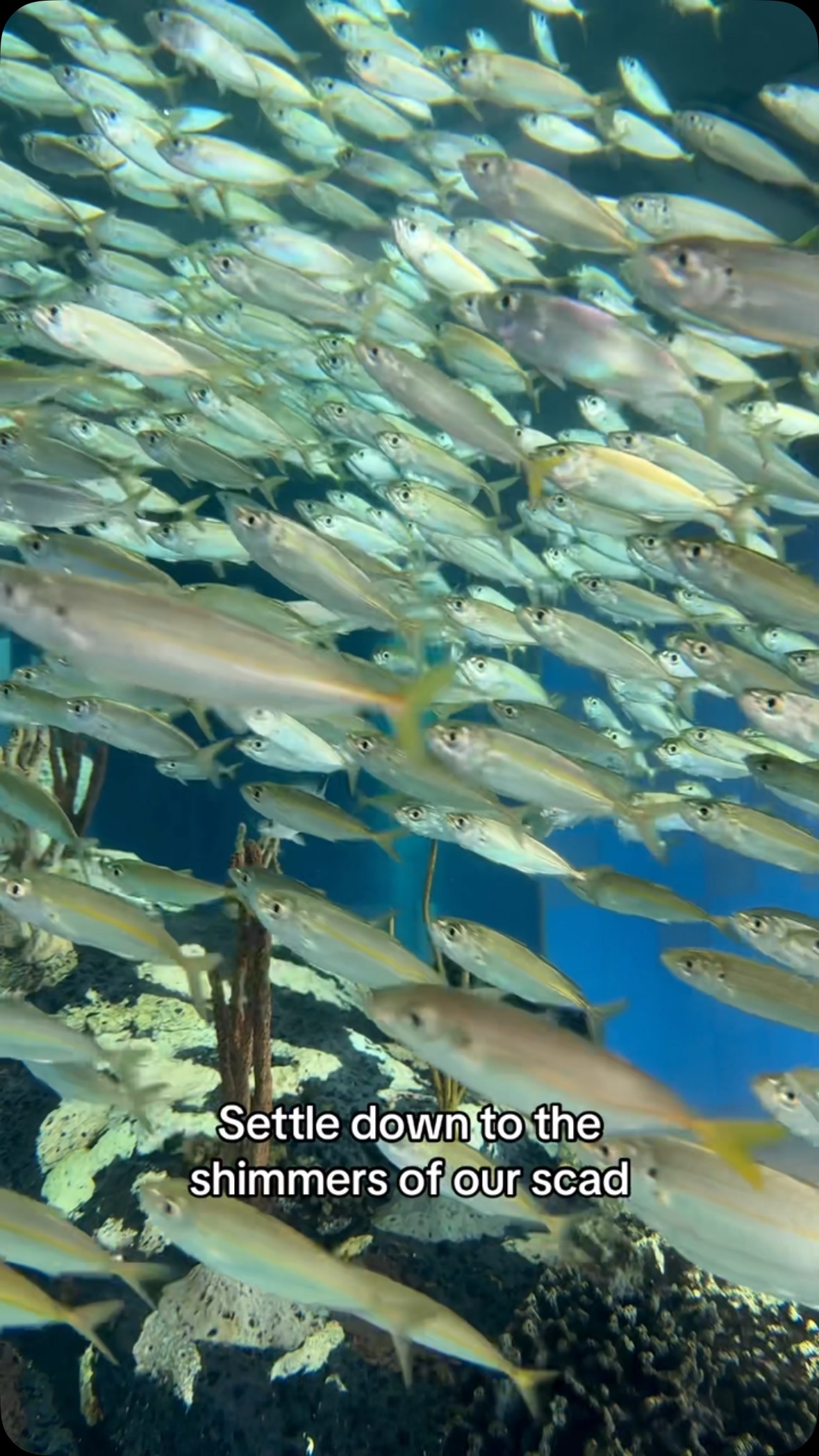- Examine the characteristics and habitat of scads as a species, highlighting their ecological significance.
- Explore the soothing movements of scads and how these relate to human inspiration.
- Discuss the role of aquariums and zoo management in showcasing marine life like scads.
- Elaborate on the conservation efforts required to preserve marine biodiversity, focusing on scads.
- Provide educational insights on observing and understanding fish behavior for environmental awareness.
Scads, belonging to the family Carangidae, are a group of marine fish that generally inhabit tropical and temperate waters. Known for their streamlined bodies and shimmering scales, scads are both fascinating and essential to their native ecosystems. Their anatomy features a forked tail and elongated body, allowing them swift movement through water—a crucial adaptation for avoiding predators and foraging efficiently. Scads primarily feed on small invertebrates and plankton, playing a vital role in marine food webs. Through understanding the physical and ecological traits of scads, we can better appreciate their contribution to the biodiversity and health of aquatic environments.
The rhythmic movements of scads as they glide and turn through their watery habitats create a visual spectacle that captivates observers. These movements are not only natural but serve as an inspiration for stress relief and mindfulness in our busy lives. Watching scads swim empowers individuals to appreciate the grace and fluidity of nature, encouraging a sense of peace and tranquility. This dynamic behavior exemplifies evolutionary adaptations such as agile navigation and efficient schooling patterns, which are critical for survival in the wild. By taking time to observe these movements, individuals may find moments of calm and inspiration.
Aquariums and zoos play an essential role in displaying marine species like scads, offering unique opportunities for educational engagement and public awareness. Through carefully designed exhibits, visitors can observe the intricate behavior of these fish, fostering a deeper understanding and respect for oceanic life. Zoo aquarists work meticulously to replicate the natural conditions of scads’ habitats, ensuring that water quality, temperature, and diet mimic what they experience in the wild. This not only supports the wellbeing of scads but also enriches the learning experience for visitors. With proper care and innovative exhibits, zoos can inspire conservation action among the public.
The conservation of marine life, including scads, is increasingly important amid ongoing environmental threats. Overfishing, habitat destruction, and climate change pose significant risks to marine species. To preserve biodiversity, it is vital to implement sustainable fishing practices and protect critical habitats such as coral reefs and mangroves, where scads often thrive. Conservation organizations work collaboratively with researchers and policymakers to promote regulations that safeguard marine ecosystems. Public education and community engagement are crucial for fostering a collective commitment to preserving marine life for future generations. Engaging the public in these efforts aids in garnering support for initiatives aimed at longer-term sustainability.
Understanding fish behavior goes beyond passive observation, as it offers valuable insights into ecological cycles and environmental health. By studying the natural behaviors of scads, scientists can detect changes in ecosystems, potentially flagging issues such as pollution or climate shifts. This behavioral data also serves as a tool in conservation efforts, helping to design more effective protection strategies. In educating individuals about observing marine life, it fosters an appreciation of our interconnectedness with nature and the importance of maintaining balanced ecosystems. Through ongoing research and public awareness, we can inspire action that prioritizes the conservation of our marine resources.
The soothing movement of scads serves more than an aesthetic purpose; it reflects intricate ecological processes and adaptive strategies for survival. Scads embody the delicate balance within marine ecosystems, making their preservation a priority for environmental sustainability. By combining education, conservation, and inspired observation, we enhance our connection to the natural world and our commitment to protect it.
*****
Source Description
Let the soothing movements of our scad serve as inspiration for you on this
.
.
.


